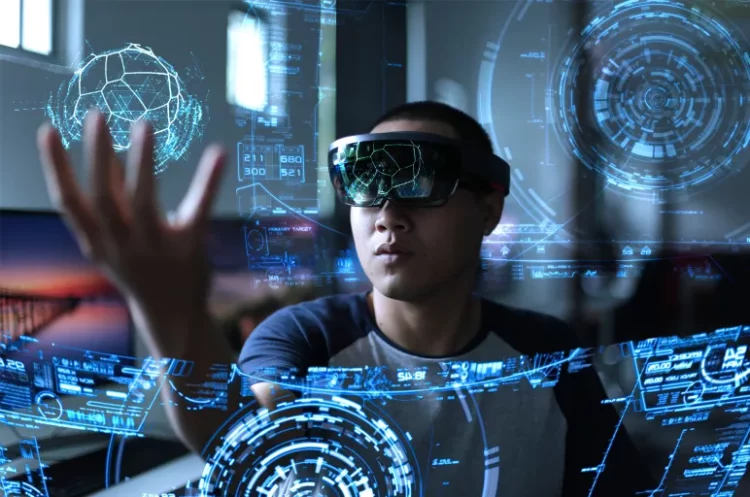Introduction: From Ideas to Impact
Innovation has often been described as the engine of human progress. But innovation is not just the spark of a new idea—it is the process by which ideas are transformed into tangible change. To understand how technology shapes our world, we must examine it not in the abstract but in the real-world contexts where it is applied.
This article explores five domains of transformative innovation—renewable energy, digital finance, healthcare technology, agricultural modernization, and education—through case studies that illuminate both opportunities and challenges. Each case reveals how technology reshapes not only industries but also human lives and societies.
Section I: Renewable Energy – Powering a Sustainable Future
The global transition from fossil fuels to renewable energy is among the most consequential technological transformations of the 21st century.
Case Study 1: Denmark’s Wind Power Revolution
In the 1970s, Denmark was heavily dependent on imported oil. The oil crises spurred investment in wind energy, initially driven by grassroots cooperatives. Today, wind power supplies more than 50% of Denmark’s electricity.
Key lessons:
- Policy alignment (subsidies, grid integration) can accelerate adoption.
- Community ownership models foster public support.
- Innovation thrives where there is a clear societal mandate.
Case Study 2: Solar Microgrids in Sub-Saharan Africa
In rural Kenya and Tanzania, decentralized solar microgrids have provided electricity to villages previously without power. Startups like M-KOPA use mobile payment platforms to make solar energy affordable.
Impact:
- Improved quality of life: lighting for study, refrigeration for medicine.
- Women’s empowerment: reduced time spent collecting firewood.
- Challenges remain: financing scale, infrastructure maintenance.
These examples demonstrate that technological innovation, when paired with creative business models and inclusive policies, can deliver both environmental and social dividends.
Section II: Digital Finance – Redefining Access to Capital
Financial innovation often determines who gets the opportunity to participate in economic growth.
Case Study 3: The Rise of Mobile Money in Kenya
The launch of M-Pesa in 2007 transformed how people in Kenya send and receive money. With a basic mobile phone, users could deposit, transfer, and withdraw funds without a traditional bank account.
Results:
- Financial inclusion expanded to millions previously unbanked.
- Local businesses benefited from more secure and efficient transactions.
- Studies show M-Pesa lifted an estimated 2% of households out of poverty.
Case Study 4: Blockchain and Cross-Border Payments
In regions with high remittance fees, blockchain platforms like Ripple have reduced transaction costs and improved transparency.
Potential:
- Faster and cheaper remittances for migrant workers.
- More efficient trade finance for small exporters.
Challenges: - Regulatory uncertainty and concerns about illicit transactions.
Digital finance exemplifies how innovation can serve as an equalizer, but also highlights the need for governance to keep pace with technology.
Section III: Healthcare Technology – Saving Lives at Scale
Healthcare innovation has perhaps the most direct and personal impact on human well-being.
Case Study 5: Telemedicine in India
India faces a shortage of healthcare professionals in rural areas. Telemedicine platforms such as Practo and Apollo TeleHealth have bridged this gap by connecting patients with urban doctors via mobile apps.
Benefits:
- Reduced travel time and costs for patients.
- Earlier diagnosis and treatment in remote communities.
- Integration with digital health records improves continuity of care.
Case Study 6: AI for Early Disease Detection
AI systems like Google’s DeepMind have demonstrated remarkable accuracy in detecting diabetic retinopathy and certain cancers. In many cases, early intervention saves lives and lowers treatment costs.
Key concerns:
- Ethical use of patient data.
- Bias in algorithms trained on limited demographic datasets.
Healthcare innovation reveals a central paradox: technology can extend and improve life, but also raises complex ethical and privacy dilemmas.

Section IV: Agricultural Modernization – Feeding a Growing Planet
Feeding nearly 10 billion people by 2050 will require transformative innovation in agriculture.
Case Study 7: Precision Agriculture in the United States
Farmers use GPS-guided tractors, drones, and soil sensors to optimize irrigation and fertilizer use. These methods reduce waste, increase yields, and minimize environmental impact.
Case Study 8: Vertical Farming in Urban Centers
Startups like AeroFarms in the U.S. and Infarm in Europe are pioneering vertical farming using LED lighting and hydroponics.
Advantages include:
- Year-round production with minimal land use.
- Lower water consumption and shorter supply chains.
Challenges include high upfront costs and energy demands.
Agricultural innovation shows how technology can address food security and sustainability simultaneously, though economic and ecological trade-offs remain.
Section V: Education for the Digital Age
Education is both a beneficiary of innovation and a driver of further innovation.
Case Study 9: Online Learning at Scale – The Coursera Model
Massive Open Online Courses (MOOCs) have democratized access to education. Coursera, founded in 2012, partners with top universities to deliver courses to millions of learners globally.
Impact:
- Access to high-quality learning in underserved regions.
- Opportunities for lifelong skill development.
Challenges: - Digital divide: lack of reliable internet and devices in poorer regions.
- Lower completion rates compared to traditional classrooms.
Case Study 10: Immersive Learning with VR/AR
Virtual reality (VR) and augmented reality (AR) offer immersive experiences for subjects like anatomy, engineering, and history.
Example:
- Students can “walk through” the human circulatory system or explore ancient civilizations virtually.
Concerns: - High equipment costs and need for curriculum integration.
Education case studies illustrate that innovation must be complemented by equitable access and pedagogical adaptation.
Section VI: Patterns Across Cases – What Makes Innovation Work
Analysis across these diverse cases reveals several recurring patterns:
- Human-Centered Approach:
Innovation succeeds when it addresses real needs—affordable energy for villages, accessible healthcare for rural patients, or practical financial tools for the unbanked. - Ecosystem Support:
Technology alone is rarely sufficient; it must be supported by appropriate policies, infrastructure, financing, and public trust. - Scalability and Sustainability:
Innovations that can expand without prohibitive costs or environmental harm tend to have the most enduring impact. - Ethics and Governance:
Transparency, inclusivity, and safeguards against misuse are vital to ensure innovation serves the broader good rather than narrow interests.
These lessons suggest that the true measure of innovation is not the novelty of an idea but its capacity to create lasting, equitable benefits.
Section VII: Future Horizons – From Frontier to Mainstream
Emerging innovations promise to further reshape our world in the coming decades:
- Artificial General Intelligence (AGI): potential to revolutionize scientific discovery but requires unprecedented oversight.
- Next-Generation Batteries: breakthroughs in storage technology could accelerate renewable energy adoption.
- Synthetic Biology: potential to create new medicines and materials but also biosecurity risks.
- Quantum Computing: expected to transform fields from logistics optimization to drug discovery.
- Space-Based Infrastructure: satellite internet and solar power generation could extend benefits to underserved populations.
Each of these innovations embodies both promise and peril—reinforcing the idea that technological advancement is inseparable from ethical and societal responsibility.
Closing Reflections: Innovation as a Human Endeavor
Innovation is often depicted as a race—between nations, companies, or inventors. But these case studies reveal that its true essence lies in collaboration across disciplines, cultures, and sectors.
The transformative power of innovation is not confined to laboratories or corporate boardrooms; it unfolds in farms, clinics, classrooms, and remote villages. It is driven by individuals and communities determined to solve problems, often in the face of limited resources.
As we confront global challenges—climate change, inequality, pandemics—the need for responsible, inclusive, and purpose-driven innovation has never been greater. The stories explored here suggest that when technology is aligned with human values and needs, it becomes more than a tool; it becomes a catalyst for progress that respects both people and the planet.
The future will be defined not only by what we invent but by how we choose to use our inventions—an enduring reminder that innovation in action is ultimately innovation in service of humanity.

















































